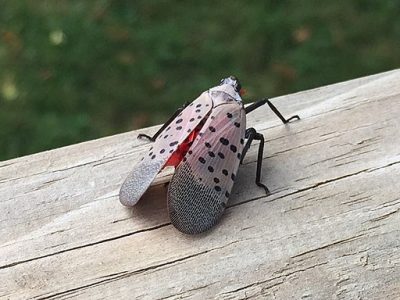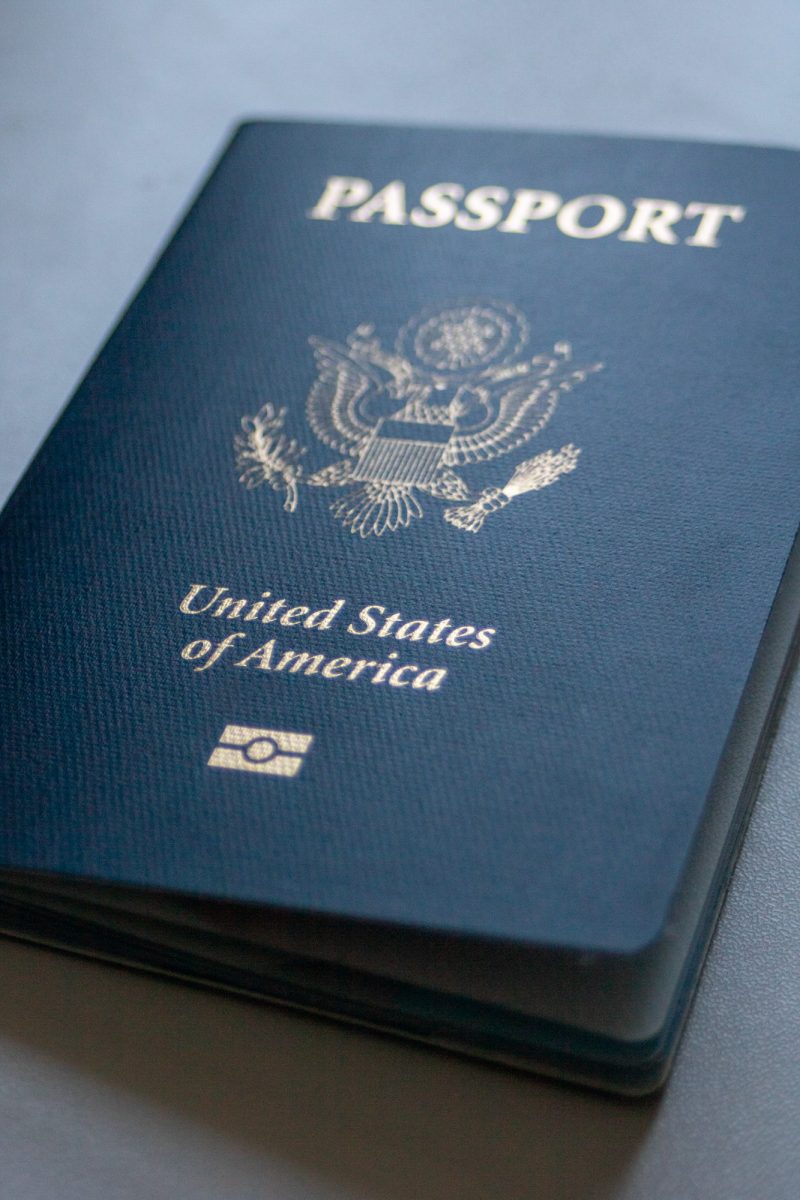Massachusetts officials have found signs of an invasive insect that could threaten the state’s trees and agricultural industry.

The Massachusetts Department of Agricultural Resources identified two dead adult specimens of the spotted lanternfly in Milford and Norwood. It is urging people to report any other signs of the insect.
Native to China and Vietnam, the spotted lanternfly was introduced to the United States in 2014. The species has been found in several states in the Northeast, including Connecticut, Delaware, Maryland, New Jersey, New York, Virginia and West Virginia, according to the Massachusetts Introduced Pests Outreach Project.
Jaime Piñero, an associate professor who researches integrated pest management at the University of Massachusetts Stockbridge School of Agriculture, said the tree of heaven, or Ailanthus altissima, is the lanternfly’s main host.
“If you know there is a tree [of heaven] in your neighborhood,” Piñero said, “you can go to the tree, and if the insect is present, most likely you will find it on that tree.”
This tree can be found in nearly every state in the U.S., but the Northeast provides the most suitable conditions.
The lanternfly can invade other crops such as grapes, cherries, peaches, apricots, nectarines and ornamental trees. It feeds on more than 65 plant species, Piñero said.
In Massachusetts, apple trees, one of the lanternfly’s hosts, are one of the state’s most valuable crops, according to the MDAR.
Nursery stock with spotted lanternfly egg masses and adults were unknowingly planted in several parts of Massachusetts, according to the MDAR.
Jennifer Orth, an environmental biologist at MDAR, said the Department is following up on potential cases from the nursery stock — plants grown for the purpose of sale or distribution.
Piñero said he was surprised that nurseries from other states are sending uninspected plant material out of state.
“Of course it’s unintentional, nobody wants to send them on purpose,” Piñero said. “But the fact that they are not inspecting these plants before shipping is very bad.”
As an invasive species, Piñero said, the lanternfly is not prey to any predatory insects in the area. The female coats the eggs with a foam-like coating over the eggs, which protects them from insecticides.
Spotted lanternflies can travel on the road, hitchhiking from states with invasions via cars and trucks carrying nursery stock. But Orth said Massachusetts has seen a number of cases not related to nursery stock as well.
Orth said the MDAR was also concerned with college students moving back and forth from the Pennsylvania area and unintentionally bringing these lanternflies with them.
“If you have an insect on a plant that’s being picked up and moved around, that insect is more likely to just fall off or disperse before it gets here,” Orth said. “But, we’re still asking people to keep an eye out.”
Piñero said the spotted lanternfly would likely be found mostly in towns close to highways. However, if transported by nursery stock, their egg masses would be prominent in rural areas.
One dead SLF was previously spotted in Massachusetts in December 2018.
“If you find a dead insect in December, the risk of them establishing is pretty much zero because it is way too cold for them to survive, but this is peak lanternfly season right now,” Orth said. “They’re just starting to lay eggs, which is definitely a concern for us. We saw the risk of establishment is higher in the summer.”





















































































































